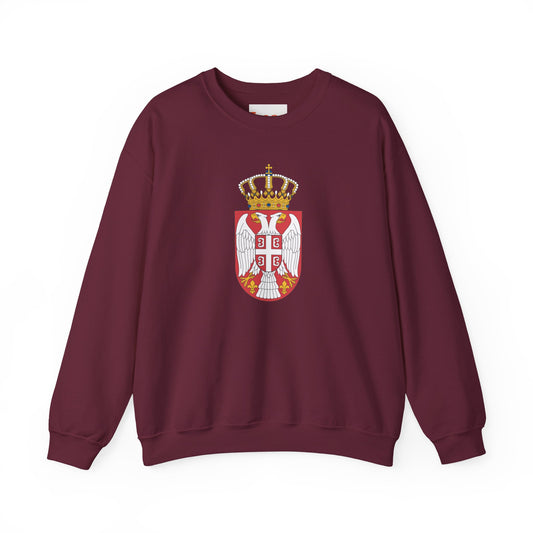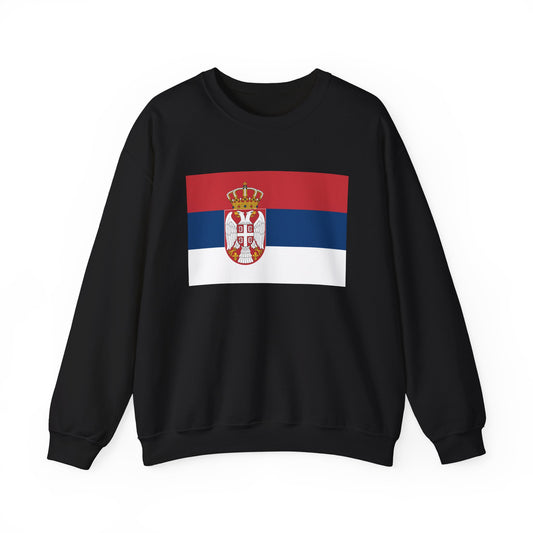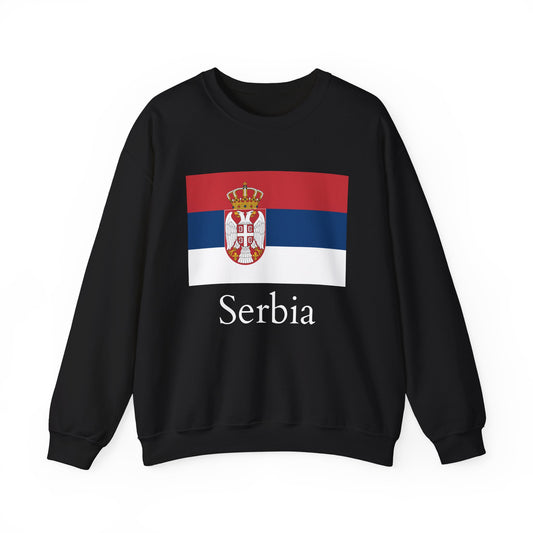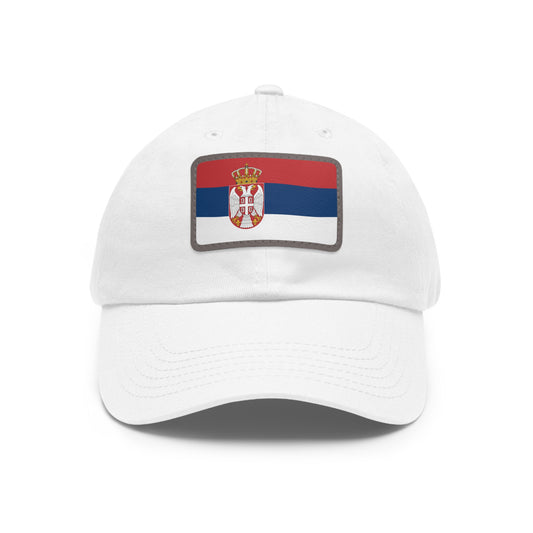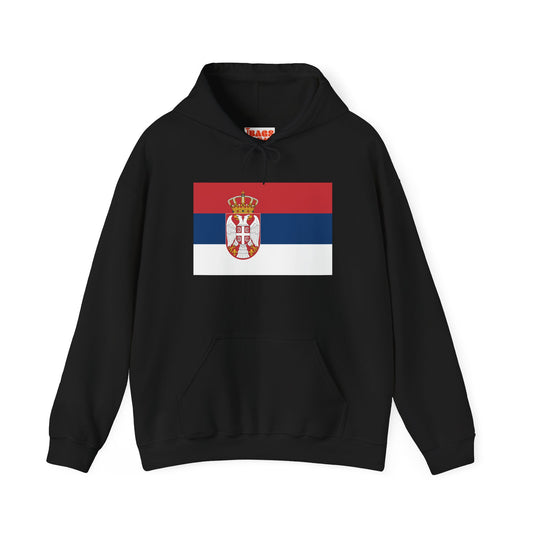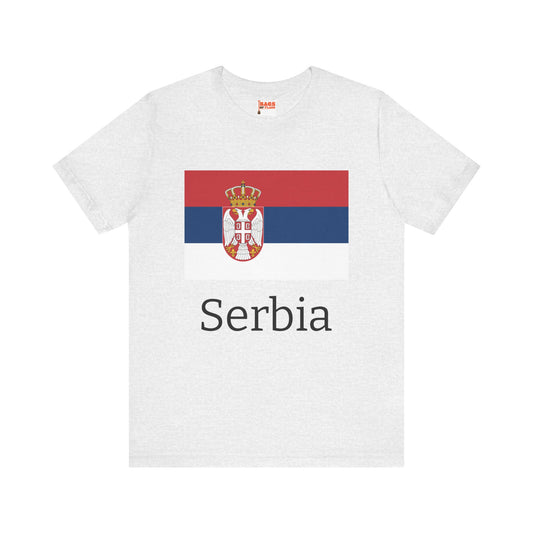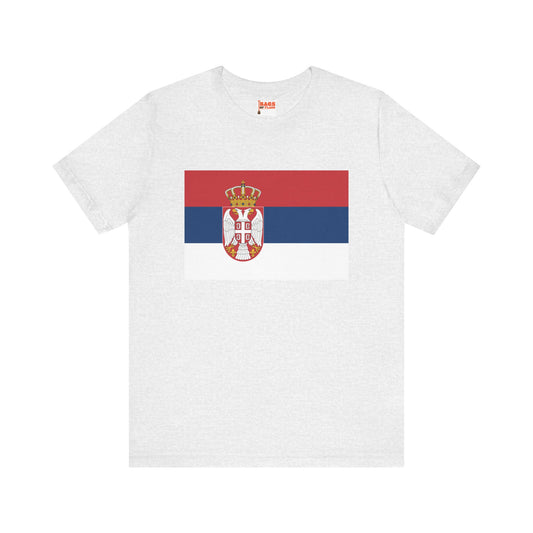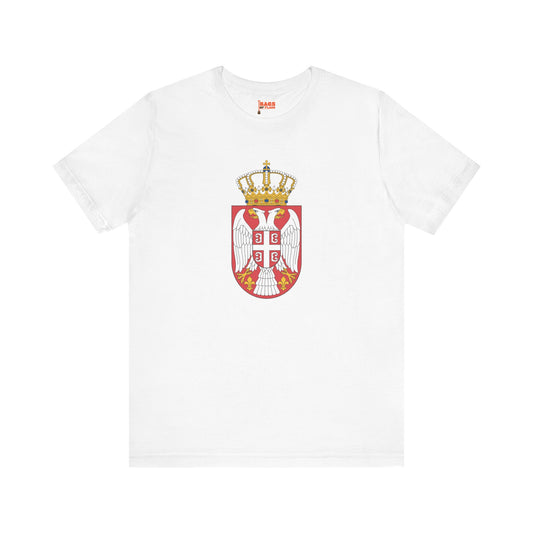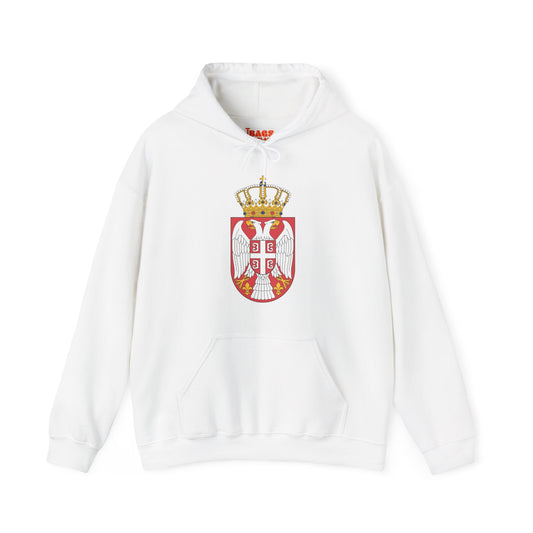-
Serbian Eagle Sweatshirt
Regular price $34.15 USDRegular priceUnit price / per -
Serbia Flag Sweatshirt
Regular price $34.15 USDRegular priceUnit price / per -
Serbia Sweatshirt
Regular price $34.15 USDRegular priceUnit price / per -
Serbia Pillow
Regular price $22.65 USDRegular priceUnit price / per -
Serbia Leather Patch Hat
Regular price $18.85 USDRegular priceUnit price / per -
Serbia Hoodies
Regular price $34.40 USDRegular priceUnit price / per -
Serbia Flag Hoodies
Regular price $34.40 USDRegular priceUnit price / per -
Serbia T-shirts
Regular price $22.79 USDRegular priceUnit price / per -
Serbia Flag on T-shirt
Regular price $22.79 USDRegular priceUnit price / per -
Serbian Eagle Inspired T-shirt
Regular price $22.79 USDRegular priceUnit price / per -
Serbian Eagle Hoodies
Regular price $34.40 USDRegular priceUnit price / per -
Historical Serbian Flags
Regular price From $43.20 USDRegular priceUnit price / per
Collection: Serbia
The Serbian flag is a symbol of pride and identity for the Serbian people. Its design and colors hold historical significance and represent the nation's values. We will explore the various aspects of the Serbian flag, including its design, historical context, symbolism, current relevance, and additional facts and protocols associated with it.

Overview of the Serbia Flag Design and Colors
The national flag of Serbia showcases a visually striking tricolor arrangement that consists of three equally sized horizontal bands. From the top to the bottom, these bands are rendered in the distinct hues of red, blue, and white. This color scheme not only provides the flag with its memorable appearance but also embeds a deeper historical and cultural resonance that reflects the Serbian heritage. The flag’s proportions, maintaining a 2:3 ratio, ensure that it presents an aesthetically balanced and harmonious display, whether flown on public buildings, at international events, or during national celebrations. The selection of these colors aligns with a tradition common to many Slavic nations, thereby situating Serbia within a broader cultural and geopolitical context. This configuration allows the flag to function as a powerful symbol of national identity, unity, and pride among the Serbian people.
Historical Context of the Serbia Flag

The evolution of the Serbia flag is deeply intertwined with the country's tumultuous history, reflecting periods of independence, occupation, and the quest for national identity. The tricolor flag, embodying red, blue, and white, was inspired by the 1835 Serbian Constitution, considered one of the most liberal constitutions of its time. This document symbolized Serbia's aspirations towards autonomy and democratic values amidst the Ottoman Empire's dominion. Initially, the flag was utilized during the First Serbian Uprising in 1804, a pivotal moment that marked the beginning of Serbia's struggle for independence from Ottoman rule.
Throughout the 19th and early 20th centuries, as Serbia oscillated between monarchy and socialist republic status, the flag underwent several modifications, especially during the Kingdom of Serbia period and later as part of Yugoslavia. Despite these changes, the tricolor design remained a constant symbol of the nation's enduring spirit and resilience.
The 2010 re-adoption of this flag, with specific dimensions and color shades, aimed to restore historical continuity and national pride after years of political and social upheaval. This act was not merely about reclaiming a historical artifact but was symbolic of Serbia's ongoing journey toward defining its place within the modern world while honoring its rich heritage. The flag's revival and official codification in the 21st century serve as a testament to Serbia's resilience and the unbroken spirit of its people through centuries of change.
Symbolism Embodied in the Flag
Each color on the Serbia flag is steeped in deep symbolic meaning, reflecting the nation's past, present, and aspirations for the future. The topmost red stripe is a powerful reminder of the courage, struggle, and ultimate sacrifices made by the Serbian people in their quest for sovereignty and freedom. It evokes the blood spilled on battlefields, underscoring a history of resilience in adversity. The central blue stripe encapsulates the hope and serenity of the Serbian sky, a metaphor for the peaceful and optimistic outlook toward the nation’s future.
It signifies a collective desire for progress and a brighter tomorrow. Lastly, the white stripe at the bottom conveys a message of unity and peace, representing the aspiration for harmony within the diverse fabric of the Serbian population. It symbolizes the light of peace and the spirit of cooperation that binds the country together. Together, these colors are not merely aesthetic choices but a visual narrative of Serbia’s tumultuous history, its enduring strength, and its perpetual quest for peace and unity. This tricolor, therefore, is much more than a flag—it is a declaration of the Serbian identity and ethos.
The Current Relevance of the Serbia Flag
Today, the Serbia flag plays a pivotal role in uniting the nation, especially during significant national holidays, commemorative ceremonies, and international sporting events, where it is proudly displayed by athletes and fans alike. It is a beacon of national pride, visible in government buildings, public squares, and educational institutions nationwide. Beyond its ceremonial use, the flag symbolizes the Serbian people's collective identity and shared values, reinforcing a sense of belonging and national unity.
While the flag generally garners respect and reverence from the populace, it has yet to be without its controversies. Discussions have arisen about its use in political contexts, where various groups have co-opted the flag's symbolism to represent divergent—and sometimes divisive—ideological stances. These debates highlight the flag's significance beyond its physical representation, as it embodies the complex narratives of Serbia's past, present, and aspirations for the future.
Additional Facts and Protocols Related to the Serbia Flag
The correct display of the Serbia flag entails the red stripe positioned at the top, with the blue and white stripes following in sequential order beneath. Proper etiquette dictates that the flag must be handled with the utmost respect and diligence to prevent damage or indignity to this esteemed emblem. Notably, a specific protocol exists for the flag's display alongside other nations' flags, ensuring it is placed in a position of honor and according to international flag etiquette. An interesting anecdote within the flag's storied legacy involves a monumental event 2004 when a colossal Serbia flag, covering an area of 3,510 square meters, was unveiled in Belgrade.
This was done in a grand gesture to mark the bicentennial of the First Serbian Uprising, a pivotal chapter in the nation's pursuit of independence. This record-setting flag celebrated a historical milestone and underscored the deep-seated national pride and unity the flag inspires among the Serbian people. The careful guidelines for the flag's display and handling, alongside such grand gestures of national pride, reflect the profound reverence Serbia holds for its flag as a central pillar of its national identity and heritage.


